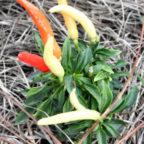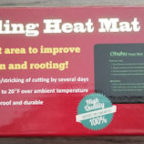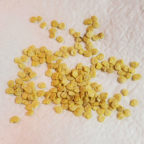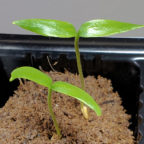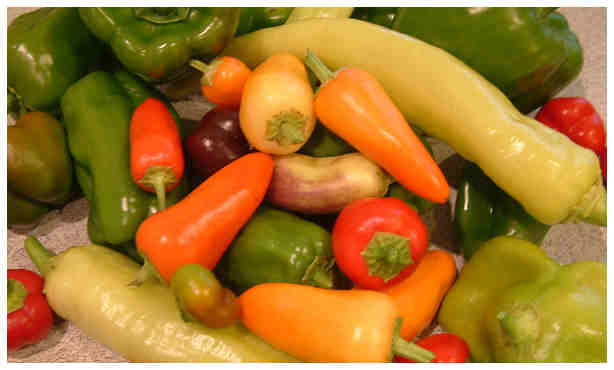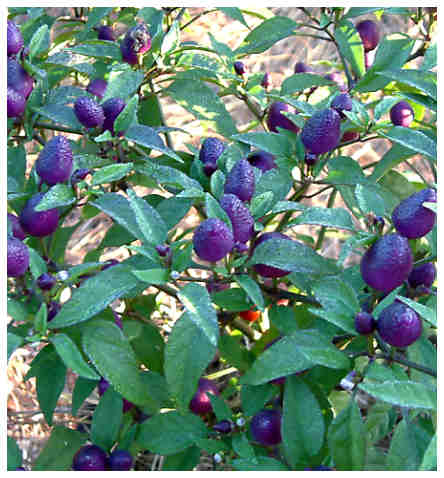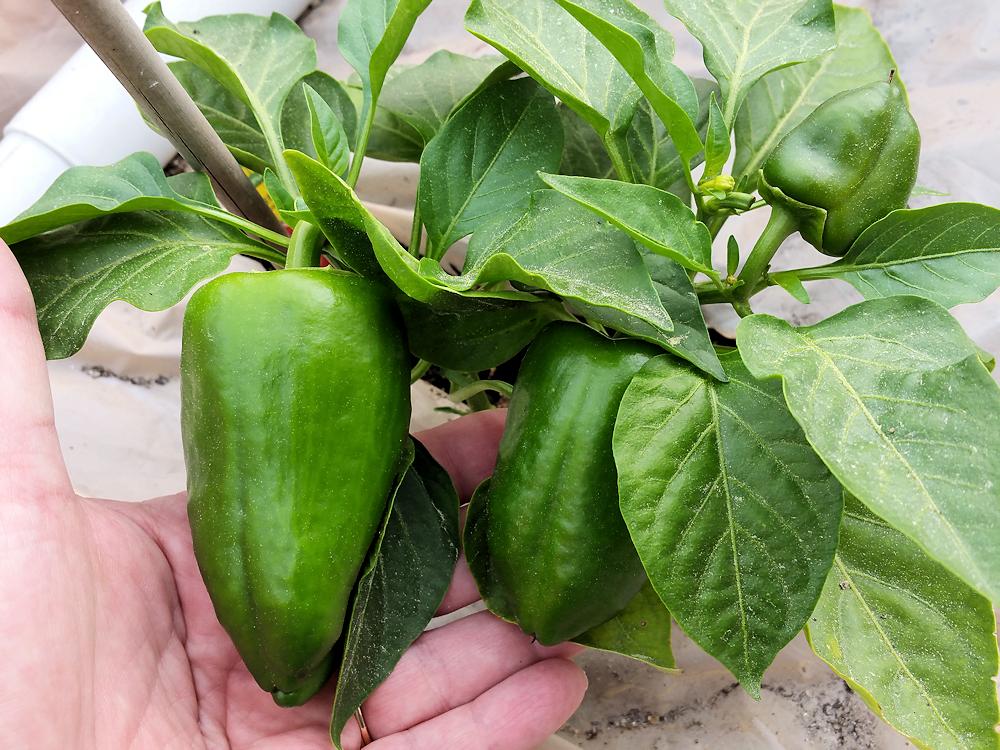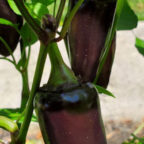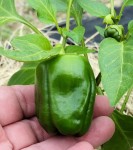Growing Peppers Indoors
Growing peppers indoors is something fun to do. You’ve likely seen something like AeroGardens, but they aren’t the only way to grow peppers inside your home. While you can go the route of an AeroGarden, with a little ingenuity you can grow your own indoor pepper plant(s)!
Supplies Needed
For a traditional indoor pepper plant setup you will need the following supplies.
- Container: a 1-gallon container is fine if you plan to grow a short plant, or if you plan to keep your plant pruned. If you have more room, try a 2- or 3-gallon container. It can be plastic, a grow bag, a self-watering container or something along those lines — just make sure the container has the appropriate drainage.
- Growing Medium: A soil less potting mix is ideal. You can buy it ready-made or create a DIY version with compost, perlite and peat moss or coconut coir. However, if you plan to just grow one or two plants, a ready-made potting mix might be easiest. Note: you may still need to add some perlite to the mix.
- Fertilizer: Organic or not? You most likely don’t want the scent of fish emulsion floating through your home, but you can try worm castings, seaweed mixes and some less-aromatic organic fertilizers. Or, you can go with something like Miracle-Gro. Or…something in between. Just make sure that the N-P-K is either quite balanced (numbers about the same) or else the last two numbers should be somewhat higher than the nitrogen.
- Water: Yep, water is obvious! Just make sure it’s warm-ish — not hot or cold. If you aren’t quite sure about the quality of your tap water, try some purified or distilled water. This is especially important if you have a water softening system that uses salt as a softener.
- Pepper Plant: Yep, you will need a pepper plant! You may want a small-ish transplant (it will probably shock less), but you can also go for a larger transplant. Or — grow your own from seed! 😀
What About Lighting?
Unless you have a large south facing window or a sunroom, you’ll probably need some sort of supplemental lighting for growing peppers indoors. While I do have a south-facing window where I grow plants, flowering and fruiting plants need more than just foliage plants.
I like LED lights myself, and I have a few scattered around. There are kinds with blue and red lights, some which have a more warm-toned (I call it yellowish) light, and some that are more like sunlight. I’ve had all three kinds, and found that they all work well, but I personally prefer the ones that are more like sunlight (white).
These days I mostly use the LED plant lights which are clip-ons with timers (3, 6 or 12 hours). They are pretty much set and forget. I think the lowest wattage I have is 50 watts, and the highest 100 watts. I’ve good results with even just the 50 watts for flowering strepocarpus plants, but if you don’t have good natural light, I’d recommend 60 to 100 watts for growing peppers indoors. These days, the LED plant lights are really inexpensive!
Varieties for Growing Peppers Indoors
What variety is best for growing peppers indoors, you may ask? You can grow just about any kind, but the best choice for you depends on what kind of peppers you like and how much space you have.
Peppers which typically grow to 12 inches or less will be easiest for most people, but if you have the room for a bigger plant…go for it! Just remember that the bigger the plant, the more light it will need.
A word about hot peppers, though (and especially the super-hots). If you have children or pets which will be around the plants, you’ll want to stick with sweet peppers, or at least those that are mild. If you don’t have to worry about small children or pets, hot is fine as long as you aren’t going to brush by them a lot. Especially when it comes to the super-hot peppers, the capsicum oil can be on the outside of the fruits, and if you get that oil on your hands, it can be an uncomfortable experience. And if you forget and rub your face…let’s not go there. Suffice to say, be very careful if you plan to grow the super-hot peppers indoors.
I’m currently in the process of growing some sweet banana peppers indoors, and I may add some Tobago Seasoning in a few more weeks. I just planted the seeds, though, so I don’t have much in the way of photos — yet! Watch for them in the coming weeks.
Meanwhile — have fun growing your own pepper plants indoors!
Sweet Bell Peppers – Growing
Sweet bell peppers growing isn’t all that hard, but you do need to know a few things to raise your chance for success! Here are some things you need to know about growing your own sweet bell peppers.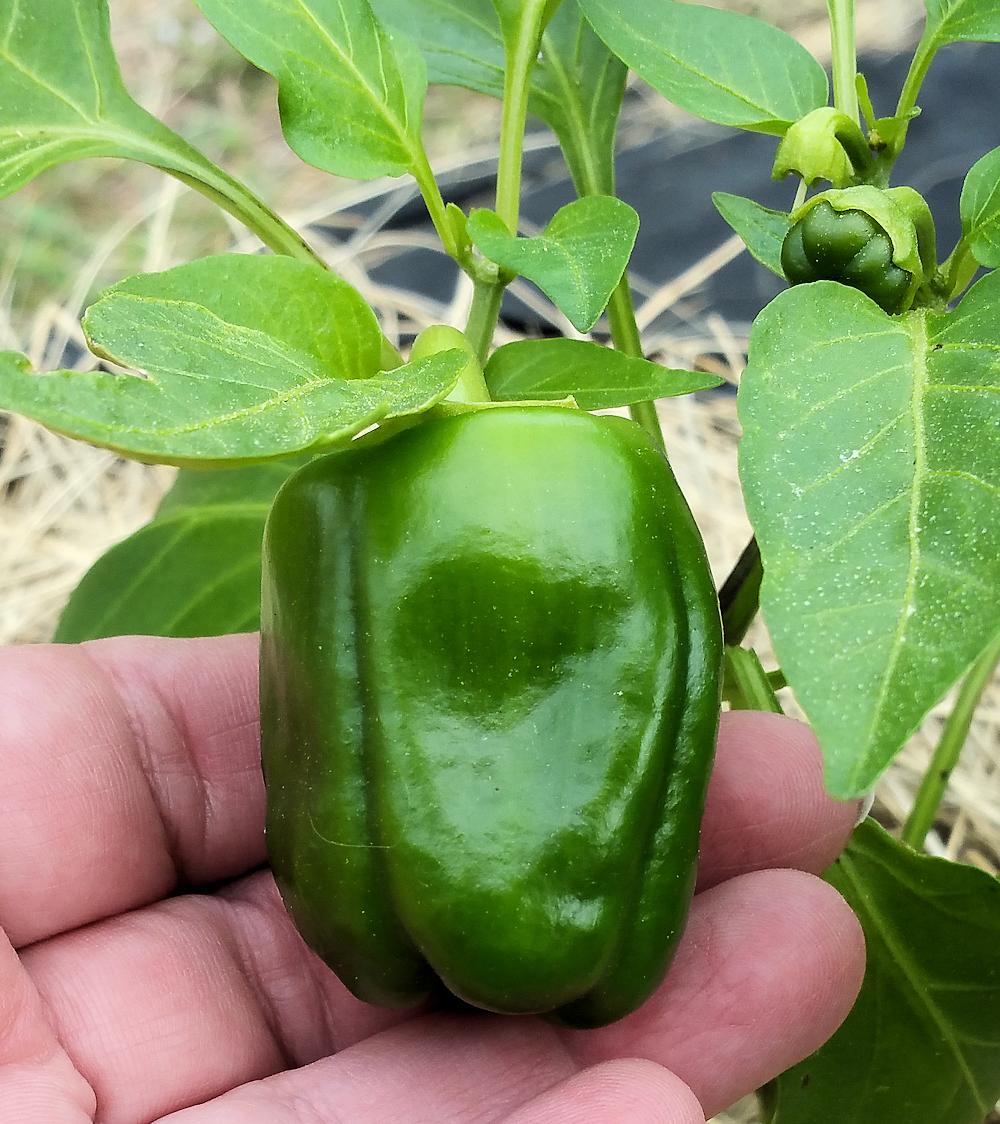
Pepper Needs
All sweet bell peppers have the same basic needs, which include:
- Sunlight – at least 6 hours per day; 8 hours is even better. But be careful about too much sunlight in some instances!
- Warmth – peppers love warm to hot weather, but it doesn’t mean you can’t grow them in cooler climates. Check out the bell peppers to consider.
- Water – most peppers like moist, well-drained soil.
Let’s talk more about the above three items for your homegrown sweet bell peppers.
Sunlight and Sweet Bell Peppers
When choosing where you grow your sweet bell peppers, the first thing to consider is sunlight. There isn’t much way around sweet bell peppers needing at least six hours of direct sunlight per day, but you also need to consider that you can actually have too much sunlight in some situations.
If you live in a place where your sunlight is extreme, you may have to actually provide a bit of shade when growing bell peppers. For example, growing sweet peppers in the southern part of the United States, or in the desert Southwest, you’ve got the double whammy of intense sunlight + intense heat. You may want to situate your pepper garden in a location where the peppers will get some light shade in the hottest part of the day.
If you live at a high altitude, you will also need to consider intense sunlight and the effect on the peppers. But if you don’t also have the intense heat, you may only need to be concerned with shading the sweet bell peppers themselves, so that they don’t get sunscald. Part of that can be accomplished by making sure the bell pepper variety you are growing has a good foliage cover.
Growing Bell Peppers and Warmth
With growing bell peppers, warmth is also a major consideration — they like it very warm. Which makes sense if you think about it, because peppers in general originated in Central and South America — quite warm regions!
They are happiest with temperatures in the 80s (Fahrenheit) during the days, and in the 60s at night. Most sweet bell peppers take 75 to 80 days from transplant to grow into sweet green peppers, ready to pick and eat. But if you want ripe bell peppers, that may take anywhere from another 2 weeks to a month before they turn their final color.
Bell peppers will quit growing at 55 degrees, so you need to consider the number of cool days you have in a growing season, as that may extend the time for ripe peppers. Solution? Grow a sweet bell pepper which needs a shorter time to harvest. Some varieties include:
- King of the North
- Northstar Hybrid
- Red Beauty Hybrid
What about frost? Frost will kill the bell peppers, so you need to be aware of your growing season – the date of your average latest expected frost to your average first expected frost. Unless you have some kind of frost protection, don’t think about transplanting them to the garden before the average last frost date for your area. And frost protection may not mean freeze protection!
Growing Sweet Peppers and Water
Sweet bell peppers need adequate water, but they definitely don’t like wet feet! Those growing sweet peppers need to be kept moist, and they like well-drained soil. (You can check out the post for what kind of soil peppers like for more info.)
You also need to consider how much sun your peppers get, along with how hot it is! If your peppers are in full sun all day and you live in a hot location, you may need to water every day in order to keep your sweet bell peppers from wilting (which can hurt the pepper development). A thick layer of mulch will help in these situations, along with making sure you have a good soil that retains enough water without making the roots swim.
Hope this information helps you grow your own sweet bell peppers (or peppers in general). 🙂
